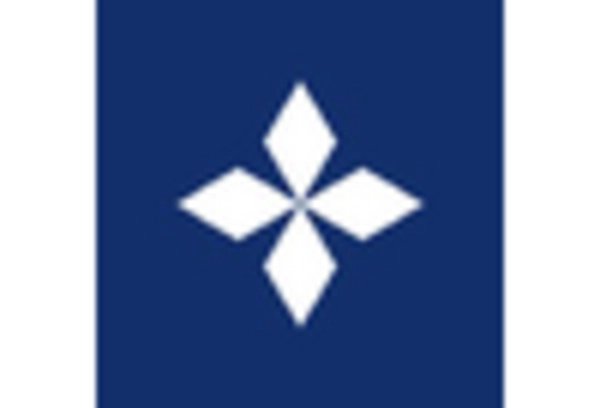Collaboration with Private Sector
Collaboration between government entities and the private sector is fostering innovation in the airborne ISR market. The U.S. government is increasingly partnering with technology firms to leverage cutting-edge advancements in sensor technology, data analytics, and unmanned systems. This trend is expected to accelerate market growth, with investments in public-private partnerships projected to exceed $5 billion by 2028. Such collaborations enable the rapid development and deployment of advanced ISR solutions, enhancing the capabilities of military operations. The airborne ISR market is thus benefiting from the agility and innovation that private sector involvement brings, ensuring that the U.S. maintains its technological edge in defense.
Emerging Threats and Countermeasures
The emergence of new threats, including asymmetric warfare and advanced missile systems, is a significant driver for the airborne ISR market. The U.S. military recognizes the necessity of adapting its ISR capabilities to counter these evolving challenges. This has led to increased funding and research into advanced airborne platforms capable of detecting and neutralizing threats. The market is projected to grow at a compound annual growth rate (CAGR) of around 6% over the next five years, driven by the need for enhanced situational awareness and threat detection. The airborne ISR market is thus becoming increasingly vital for developing countermeasures that ensure national security and operational superiority.
Increased Focus on National Security
National security concerns are driving investments in the airborne ISR market. The U.S. government prioritizes the enhancement of its surveillance capabilities to address emerging threats, including terrorism and cyber warfare. This focus has led to a projected growth rate of approximately 5% annually in the airborne ISR sector. The need for persistent surveillance and reconnaissance has prompted the military to adopt advanced technologies, such as high-altitude long-endurance drones, which can operate in contested environments. As geopolitical tensions rise, the demand for reliable ISR solutions is expected to intensify, further propelling the market forward. The airborne ISR market is thus positioned to play a crucial role in safeguarding national interests and ensuring operational readiness.
Integration of Artificial Intelligence
The integration of artificial intelligence (AI) into airborne ISR systems is transforming the market landscape. AI technologies enhance data processing capabilities, enabling faster and more accurate analysis of vast amounts of information collected from various sensors. This advancement is particularly relevant in the U.S. military, where the need for timely intelligence is paramount. The airborne ISR market is likely to see a substantial increase in AI-driven solutions, with projections indicating a growth of over 10% in AI-related investments by 2027. These innovations not only improve operational efficiency but also reduce the cognitive load on human operators, allowing for more effective mission planning and execution. As AI continues to evolve, its impact on the airborne ISR market will be profound.
Growing Demand for Surveillance Capabilities
The increasing need for enhanced surveillance capabilities is a primary driver in the airborne ISR market. As security threats evolve, both governmental and military organizations are investing heavily in advanced ISR technologies. The U.S. defense budget allocates a significant portion to intelligence, surveillance, and reconnaissance, with estimates suggesting that spending could reach $20 billion by 2026. This demand is fueled by the necessity for real-time data to support decision-making processes in various operations. Consequently, the airborne ISR market is witnessing a surge in the development of sophisticated platforms that can provide comprehensive situational awareness. The integration of advanced sensors and data analytics further enhances the effectiveness of these systems, making them indispensable in modern defense strategies.

















Leave a Comment